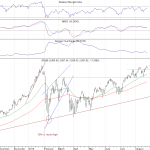Analysis Overview – In the recent past, I have discussed several energy stocks from a liquidity and balance sheet perspective with Occidental Petroleum being the most discussion. The aim is to select stocks that can navigate the crisis with ease and maintain healthy credit metrics. Hess Corporation (NYSE:HES) is another stock in the exploration sector that has robust liquidity buffer and an attractive balance sheet. This article discusses the company’s liquidity outlook for 2016 and 2017 considering the guidance provided by the company.
The chart below gives the liquidity position for Hess Corporation for 2016 followed by key assumptions in the liquidity analysis.

The following are the key assumptions in the liquidity analysis –
1) The company’s initial liquidity of $4.3 billion includes cash proceeds from the recent equity offering.
2) Hess Corporation reported operating cash flow of $623 million for 4Q15 and it would roughly imply annual OCF of $2.4 billion. For 2016, the cash flow is assumed at a conservative $2.0 billion.
3) Hess Corporation has $600 million in debt maturity in the next three years and it’s assumed that the company repays debt outstanding in the next 36 months.
The important conclusions are as follows –
1) Hess Corporation is likely to close FY16 with cash of $3.0 billion. In addition, the company has undrawn credit facility of $4.7 billion and this implies 12-month forward liquidity buffer of $7.7 billion.
2) Assuming that Hess Corporation increases FY17 capital expenditure to $3.0 billion and further assuming that FY17 cash flow is around $2.5 billion, Hess Corporation is fully funded for capital expenditure in FY17 without incurring additional debt.
Hess Corporation is therefore fully funded for the next 24 months through internal cash and the company can potentially reduce debt during this period.
With a conservative investment outlook, manageable debt maturity, strong cash position and quality assets (robust cash margin), Hess Corporation is an attractive investment. I expect the company’s credit profile to remain strong in the next 24 months even if oil remains in the range of $40 to $50 per barrel.













Leave A Comment